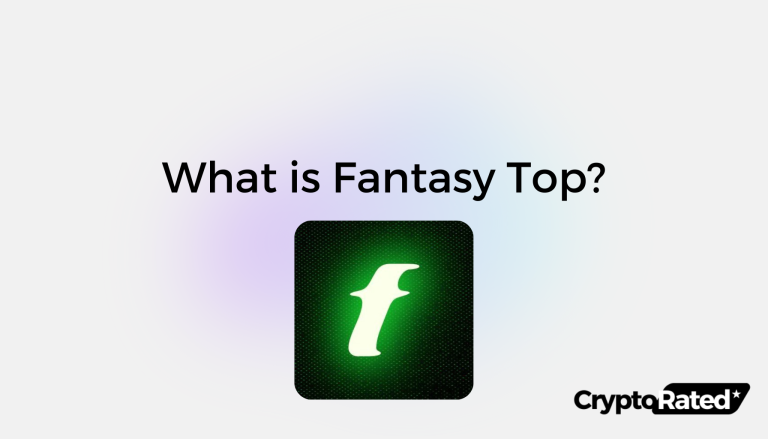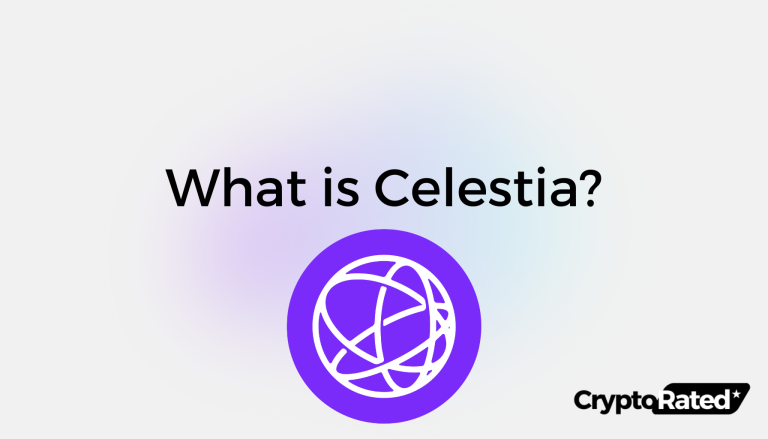
Liquid staking is becoming an increasingly growing part of the crypto market. On Ethereum and other EVM-compatible chains, Lido DAO, the top liquid staking protocol by total value locked (TVL), is accounting for $27.5 billion in TVL, representing over 30% of the total TVL of the DeFi sector across all blockchains.
Now, Stride is bringing a state-of-the-art multichain liquid staking experience to the Cosmos ecosystem. This allows users to use their staked tokens on decentralized finance protocols while earning staking rewards on various Cosmos-based blockchains.
By introducing liquid staking to Cosmos, Stride has become the top liquid staking protocol within the Cosmos ecosystem.
Key Takeaways
- Stride introduces liquid staking to the Cosmos ecosystem, allowing users to stake several blockchains’ native tokens and leverage them on DeFi protocols to earn additional yield.
- As the top liquid staking hub on Cosmos, Stride features over 50,000 users and a $130 million total value locked (TVL).
- Formerly called ST, Stride’s native STRD token serves multiple use cases within the liquid staking protocol’s ecosystem, including governance and staking.
What Is Stride’s Role in the Blockchain Space?

Stride is a blockchain within the Cosmos network that introduces liquid staking to the ecosystem. Called the Internet of Blockchains, Cosmos is a decentralized hub of multiple independent chains that run in parallel, as well as scale and interoperate with each other.
Before Stride’s launch in September 2022, liquid staking was unavailable on Cosmos blockchains. Despite liquid staking’s massive popularity on Ethereum and other EVM chains, as well as Solana, users had to choose between earning a passive income via staking or taking increased risks to put their tokens to work on DeFi protocols.
To address the above challenge, Stride has launched its liquid staking protocol, unlocking liquidity and enhancing the use cases of native liquid staking tokens within the Cosmos ecosystem. Consequently, it has become the top liquid staking zone among Cosmos-based blockchains, featuring over 50,000 users and a $130 million total value locked (TVL).
Supporting the native tokens of 14 different Cosmos blockchains, Stride enables users to stake their digital assets via the protocol and receive liquid staking tokens (LSTs) in exchange. LSTs represent stakers’ staked tokens and the respective rewards (and potential slashing penalties) they accumulate over the staking period.
To redeem their earnings and their staked native tokens, holders are free to unstake their LSTs on Stride at any time, which they can withdraw after a mandatory unbonding period. The latter varies by the asset and can be avoided by selling LSTs directly on a Cosmos-based DEX like Osmosis.
Alternatively, stakers can earn additional yield on their LSTs by leveraging them on DeFi protocols for providing liquidity to pools, lending them to borrowers, or executing yield farming strategies – all while continuing to receive staking rewards. However, it’s important to note that this potential extra revenue comes with greater risks.
What Are Stride’s Key Use Cases?
Stride expands the use cases of staked tokens through liquid staking. By transforming untradeable and untransferable assets into LSTs, the protocol unlocks liquidity across the Cosmos ecosystem and enables holders to utilize their staked coins in DeFi decentralized applications (dApps) to generate additional yield.
You can find a short list of the use cases of Stride’s liquid staking protocol:
- Stake Crypto: Users can stake native tokens from any compatible Cosmos chain via Stride.
- Receive LSTs: Participants receive liquid staking tokens (also called LSTs or stTokens) in return for their staked assets, representing their initial stake plus the accumulated rewards and potential slashing penalties.
- Accumulating Rewards: While holding them in the form of LSTs, staked tokens continue to earn rewards for holders, increasing stTokens’ value.
- Engage With DeFi Protocols: Optionally, holders can utilize their LSTs across DeFi protocols to generate additional returns.
- Unstaking: At any point, stTokens can be redeemed for the initial stake along with any accumulated rewards and penalties. Stride then starts the unbonding phase, after which users will be free to withdraw their tokens.
What Is STRD, and How Does its Tokenomics Look Like?
Formerly known as ST, STRD is Stride’s native governance token that plays a central role in the Cosmos-based liquid staking hub’s ecosystem. Its use cases include proposing and voting on governance proposals, incentivizing liquid staking activity, as well as sharing protocol fees with STRD stakers.
Check the table below to learn more about STRD and Stride’s tokenomics:
| Aspect | Description |
| Genesis Supply | At genesis, the circulating supply of STRD tokens is set at 9.2 million, which changes with coin emissions, vesting, and potential deflationary mechanisms (e.g., token buybacks). |
| Max Cap | The maximum supply of tokens is set at 100 million STRD. With token emissions and vesting, half of this amount will be circulating in the market by the middle of year two and 95% in circulation by the end of the third year. |
| Yearly Halving | Beginning when the circulating supply reaches 9.45 million STRD, block-by-block token emissions are reduced by 50% every year until they asymptotically reach zero in a similar deflationary process as Bitcoin’s halving mechanism. |
| Community Incentives | At launch, 31 million STRD tokens are allocated to community incentives to boost liquid staking activity in the ecosystem. |
| Vesting | With a one-year cliff, 16.7 million STRD allocated to partners and 24.2 million STRD to core contributors are vested linearly over two years. |
In addition to its use cases in staking and governance, STRD’s value is backed by the 10% the protocol charges on liquid staking rewards. Consequently, the ecosystem can benefit from a continuous revenue stream to finance Stride’s operations and provide incentives to participants.
How Does STRD’s Distribution Look Like?
| Category | Allocation |
| Community Airdrops (6.3%) | 6.3 million STRD is allocated to community airdrops, such as one at genesis to ATOM, OSMO, and JUNO stakers. |
| Staking Rewards (5.2%) | 5.2 million STRD is distributed to STRD stakers. |
| Community Incentives (31%) | 31 million STRD is allocated to incentives to boost liquid staking activity on Stride. |
| Community Growth (3.6%) | 3.6 million STRD is allocated to the Stride DAO to cover the costs of community services. |
| Strategic Reserve (10.91%) | The Stride Foundation uses the 10.91 million STRD in the strategic reserve to foster the liquid staking protocol’s long-term success and growth. |
| Core Contributors (24.2%) | 24.2 million STRD is distributed to current and future core contributors as incentives. |
| Partners (16.7%) | 16.7 million STRD is allocated to VCs investing in Stride, as well as Cosmos validators the project has partnered with. |
| Initial Security Budget (2.2%) | 2.2 million STRD is utilized for security measures like ongoing audits and the development of rate-limiting solutions. |
What Safety Measures Does Stride Offer to its Users?
Stride is committed to the security of its users, offering the following measures on its liquid staking solution:
| Security Measure | Description |
| Security Audits | Performed by prominent blockchain security firms like Informal Systems, CertiK, and OAK Security, security audits’ goal is to identify and fix potential vulnerabilities in Stride’s ecosystem. |
| Minimalistic Design | Stride utilizes a minimalist approach to protocol design to limit the attack surface, moving parts, and edge cases. |
| Economic Security | Supported by the economic stability of the Cosmos Hub. |
| Bug Bounties | Active bug bounty program to uncover and resolve security issues. |
| Rate Limiting | IBC rate limiting limits how much can be transferred through the Inter-Blockchain Communication protocol to minimize losses in the event of an attack. |
Final Thoughts
Stride unlocks liquidity within the Cosmos ecosystem, empowering native token holders to earn staking rewards while using LSTs on DeFi protocols. This significantly expands the use cases of staked tokens, enabling users across supported Cosmos-based blockchains to take advantage of the same liquid staking that has been enjoying massive popularity on Solana and EVM chains.
Frequently Asked Questions (FAQ)
How to stake tokens on Stride?
You can stake tokens on Stride from any supported Cosmos blockchain via your wallet. There’s no minimum amount you can stake, and you can accumulate rewards in real time.
After staking your tokens, you will receive liquid staking tokens (LSTs or stTokens), which can be freely traded, transferred, redeemed for the initial stake, or used on DeFi protocols to earn additional yield.
What are STRD’s use cases?
STRD is Stride’s native token, which can be utilized to propose and vote on governance-related matters. Besides that, staking STRD also shares a part of the protocol fees as revenue with stakers.
What is liquid staking?
Liquid staking is a process that allows users to transfer, exchange, spend, and use their staked tokens – all while continuing to earn staking rewards.
On a liquid staking protocol like Stride, users can stake the native tokens of Proof-of-Stake (PoS) blockchains like Ethereum, Solana, and Celestia. After locking up their coins, they receive liquid staking tokens (LSTs) representing their initial stake and accumulated rewards (and potential slashing penalties). LSTs can be unstaked at any time after a mandatory bonding period (in some cases, there are no bonding periods).
WRITTEN
Benjamin Vitaris
Seasoned crypto, DeFi, NFT and overall web3 content writer with 9+ years of experience. Published in Forbes, Entrepreneur, VentureBeat, IBTimes, CoinTelegraph and Hackernoon.




